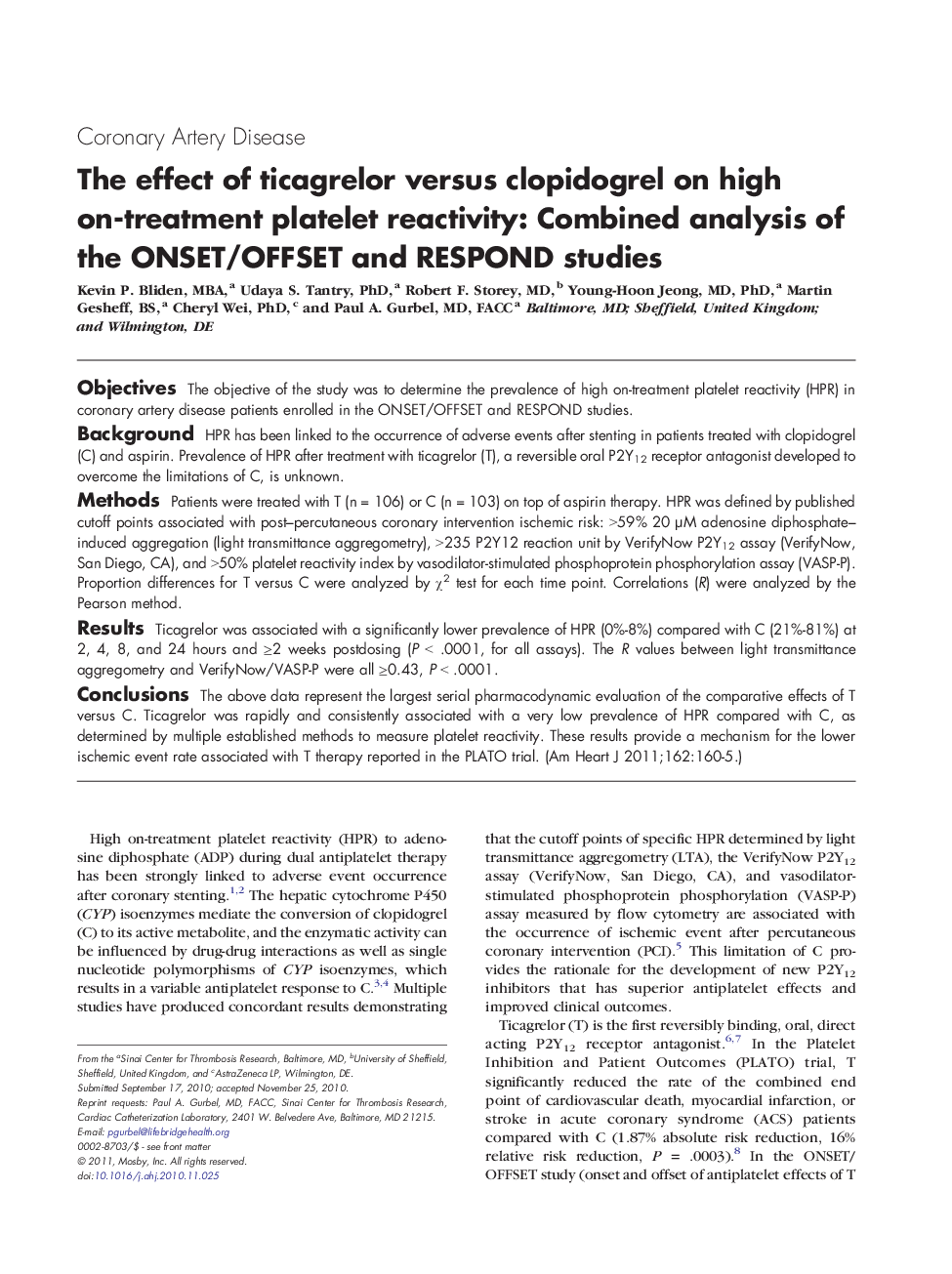| Article ID | Journal | Published Year | Pages | File Type |
|---|---|---|---|---|
| 2850393 | American Heart Journal | 2011 | 6 Pages |
ObjectivesThe objective of the study was to determine the prevalence of high on-treatment platelet reactivity (HPR) in coronary artery disease patients enrolled in the ONSET/OFFSET and RESPOND studies.BackgroundHPR has been linked to the occurrence of adverse events after stenting in patients treated with clopidogrel (C) and aspirin. Prevalence of HPR after treatment with ticagrelor (T), a reversible oral P2Y12 receptor antagonist developed to overcome the limitations of C, is unknown.MethodsPatients were treated with T (n = 106) or C (n = 103) on top of aspirin therapy. HPR was defined by published cutoff points associated with post–percutaneous coronary intervention ischemic risk: >59% 20 μM adenosine diphosphate–induced aggregation (light transmittance aggregometry), >235 P2Y12 reaction unit by VerifyNow P2Y12 assay (VerifyNow, San Diego, CA), and >50% platelet reactivity index by vasodilator-stimulated phosphoprotein phosphorylation assay (VASP-P). Proportion differences for T versus C were analyzed by χ2 test for each time point. Correlations (R) were analyzed by the Pearson method.ResultsTicagrelor was associated with a significantly lower prevalence of HPR (0%-8%) compared with C (21%-81%) at 2, 4, 8, and 24 hours and ≥2 weeks postdosing (P < .0001, for all assays). The R values between light transmittance aggregometry and VerifyNow/VASP-P were all ≥0.43, P < .0001.ConclusionsThe above data represent the largest serial pharmacodynamic evaluation of the comparative effects of T versus C. Ticagrelor was rapidly and consistently associated with a very low prevalence of HPR compared with C, as determined by multiple established methods to measure platelet reactivity. These results provide a mechanism for the lower ischemic event rate associated with T therapy reported in the PLATO trial.
